What is the Creta?
Well, it's the Hyundai ix25 renamed for India. You will agree that the name is awkward, and Hyundai could've definitely thought up something better. The reason for the name change isn't known. My guess is, this has something to do with a change in nomenclature at the global level. Hyundai seems to be dropping the 'ix' series. For instance, the 3rd generation Hyundai Tucson gets the 'Tucson' badge again, unlike the 2nd generation which was called the ix35.
It's shocking how the 6 biggest car manufacturers are late to the million-rupee monocoque SUV craze in India. This is especially so for Hyundai & Maruti who usually have their finger on the pulse of the market. Nevertheless, the Creta is a very important product for the Koreans. Hyundai says that the SUV will be manufactured in India and exported globally (they haven't yet specified which countries). The Indian arm has pumped in 1,000 crore rupees on the Creta, and it will be the company's 10th model on sale.
The Indian ix25 looks exactly like the Chinese car, except for some small changes. As an example, we get a dosage of chrome at the front and rear on the higher variants. Lower variants parked at the factory had a black front grill and no chrome garnish above the rear number plate.
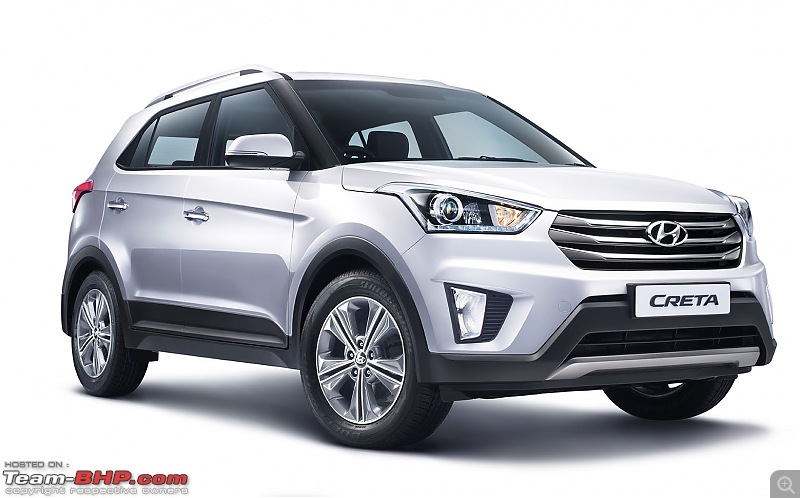
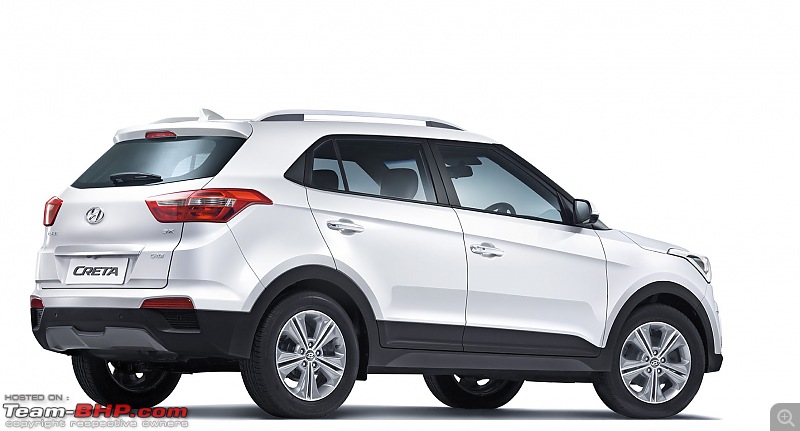
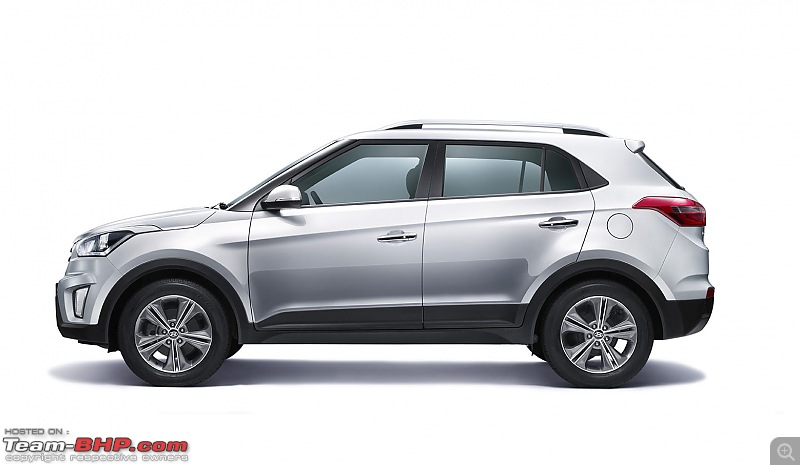
Size wise, the Creta is comparable to the Renault Duster, and not the smaller Ford EcoSport. Move over to the side and you know this is no sub-4 meter SUV. It almost feels like a shrunken Santa Fe! The Creta gets Hyundai's new Fluidic 2.0 design language, with a big Santa Fe-like triple slat grille dominating the front end, along with Santa Fe-like headlamps housing projectors & LED positioning lamps. Side-facing static bending lights like in the XUV500 will be offered too. The flat bonnet is quite large for an SUV of this size. Those black A-pillars look stylish (à la Maruti Swift) while the bottom part of the body has black cladding all around. At the rear, the smart horizontally laid-out tail lamps blend well with the overall design. The only thing I found odd & out of place was that ugly chrome garnish above the rear number plate. It doesn't gel with the car at all. Chrome is further seen on the door handles. Unlike the Chinese ix25, the Creta gets raised roof rails. A shark fin antenna sits at the end of the roof; it works for both, radio and GPS signals. The top SX(O) variant wears 215/60 tyres on 17" diamond cut alloys, while the lower variants ride on 205/65 R16 rubber.

The Hyundai Creta will be offered with 3 engine options, all shared with the Verna - one petrol engine (the familiar 121 BHP 1.6L) and two diesels (a 1.4L & the 126 BHP 1.6L). The 1.4 CRDi's power output wasn't mentioned, but it should be in the whereabouts of 89 BHP (same as the Verna & Elite i20). All 3 engines will be mated to a 6-speed manual gearbox. Hyundai's trump card will be the 6-speed Automatic transmission that's going to be offered with the 1.6L diesel. That will make it the only
Diesel Automatic SUV this side of the 25 lakh Rexton & Pajero Sport. The Scorpio AT has been discontinued, the XUV500 AT remains indefinitely delayed and Ford offers the EcoSport AT only with a 1.5L petrol. Premium customers love slushboxes and the Creta has a USP here. On the other hand, I'm perplexed as to why Hyundai won't offer a petrol AT. Petrol engines have been continuously increasing their market share in India. Hyundai already sells the 1.6L petrol with an AT in other cars and I'm hopeful of a correction in product strategy here. If you have the engine & transmission ready anyway, why not let the customer choose if it deserves a place in the showroom or not?
The only variant on display at this preview event was the 1.6L diesel. I must say, even the 1.6L CRDi engine is a comfortable fit in the engine bay. There is ample space under the hood. The engine sits low; considering the bonnet height, I thought it would be positioned higher. As with all other Hyundai diesels, the turbocharger is bolted on the backside of the block. The demo cars had a plastic engine shield.
Unfortunately, the Creta won't be coming with an AWD option. For now, Hyundai will be offering it in FWD only. A part-time AWD is surely on our wishlist. Sometime in the future, perhaps?
The suspension hardware is similar to its FWD competitors. McPherson strut layout at the front and a torsion beam rear. The suspension doesn't intrude into the boot, although the huge 17" spare wheel occupies nearly all the depth. The rubber bump stoppers, marked prominently in orange, are clearly visible on the rear suspension. The underbody is clean. There aren't any low hanging bits and everything is tucked in properly. The fuel tank is positioned ahead of the rear axle. Braking hardware is the staple disc brake front + drum brake rear. Hyundai is making this the norm for all cars below the Elantra. The new Verna & Elite i20 also lost the rear disc brakes of their predecessors. Sadly, Hyundai has chosen to follow market trends here, and not lead by example.
While the ix25's ground clearance is 183 mm, the exact specification for the Creta hasn't been shared yet. It will be at least as much, if not a little more (Indian versions are usually raised compared to their international counterparts). Even the i20 Active has 190 mm of ground clearance!
Hyundais have always been loaded with features and the Creta is no different. Among other things, you get leather seats, 7" touchscreen ICE, navigation, reversing camera, engine start / stop button, projector headlamps, 17" rims and electrically folding ORVMs. The safety kit is topnotch with the Creta SX(O) having 6 airbags, ESP & Hill-start assist. In particular, Hyundai's communications are focussing on the Creta's safety levels. It has an ultra-high tensile steel body structure with protection in all directions from 'ring-shaped frames'. Each pillar, including the center pillar, side frames and bottom are positioned in a ring-like layout, all connected. Hyundai says that the ring-structure brings a significant increase in body stiffness. In the Chinese NCAP tests, the ix25 scored the full 5 stars for safety.
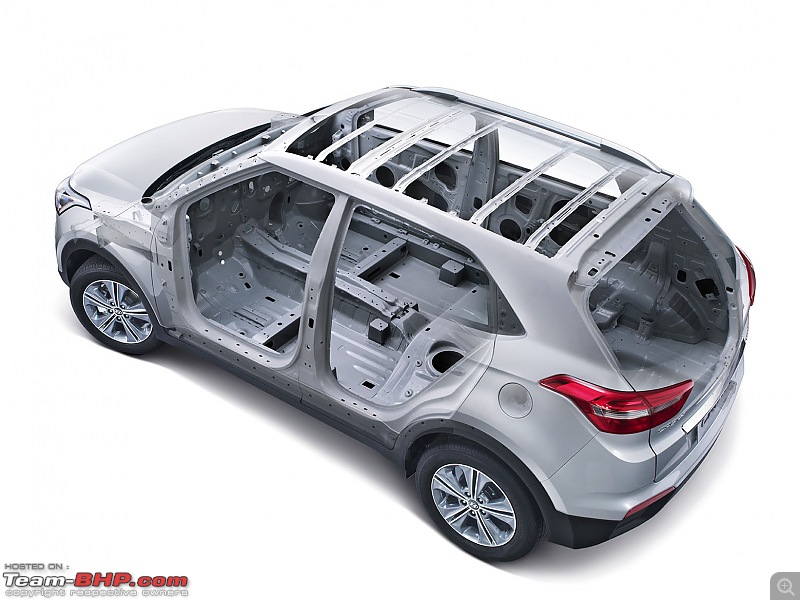

 (67)
Thanks
(67)
Thanks

 (58)
Thanks
(58)
Thanks

 (63)
Thanks
(63)
Thanks

 (60)
Thanks
(60)
Thanks

 (77)
Thanks
(77)
Thanks

 (1)
Thanks
(1)
Thanks
 (4)
Thanks
(4)
Thanks
 (2)
Thanks
(2)
Thanks
 (1)
Thanks
(1)
Thanks

 (5)
Thanks
(5)
Thanks
 (1)
Thanks
(1)
Thanks
 (1)
Thanks
(1)
Thanks
 (2)
Thanks
(2)
Thanks




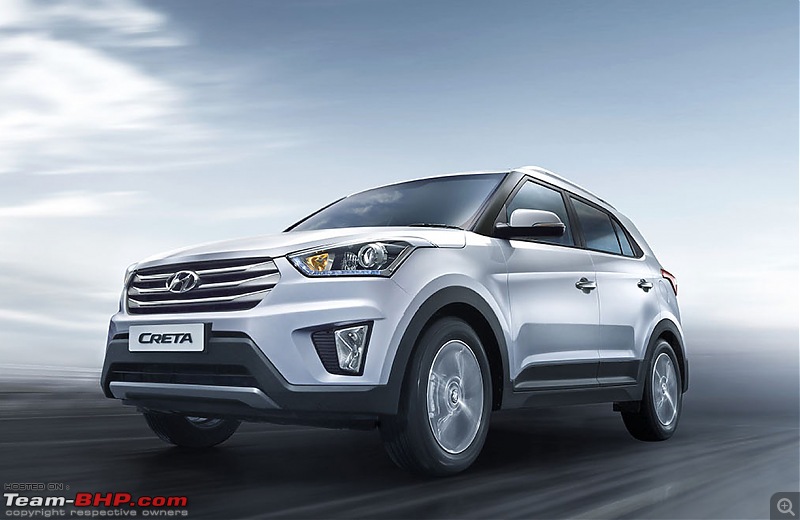





 .
.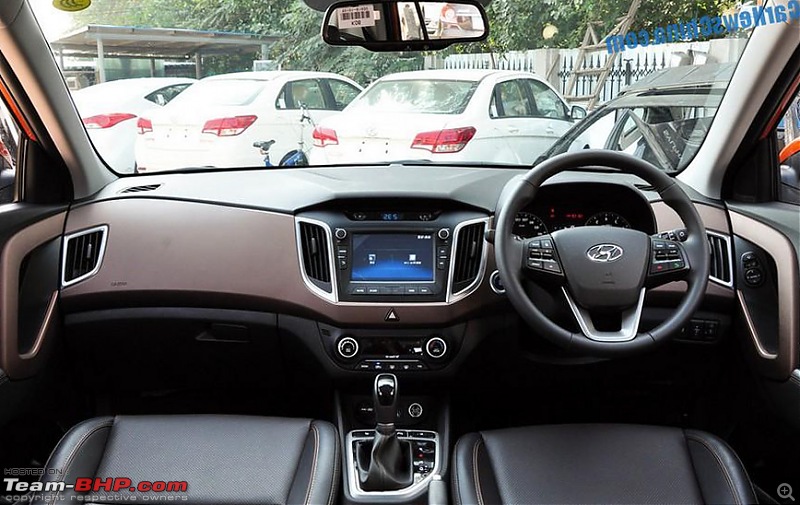

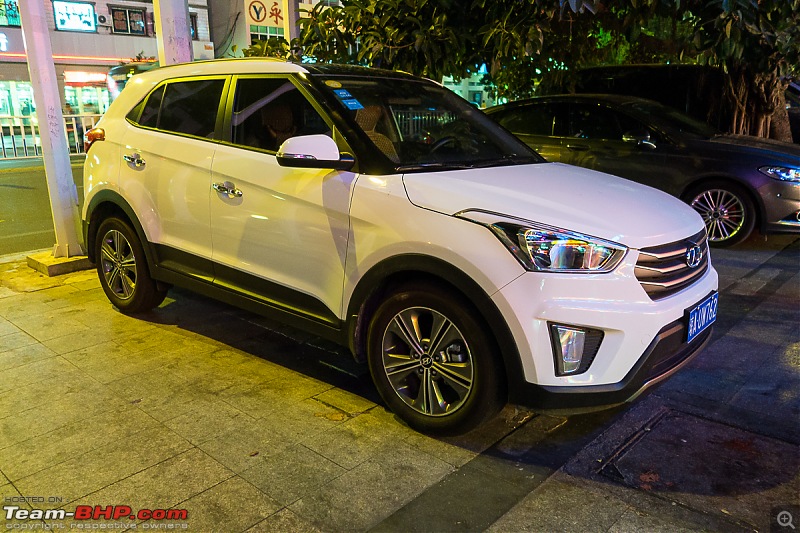
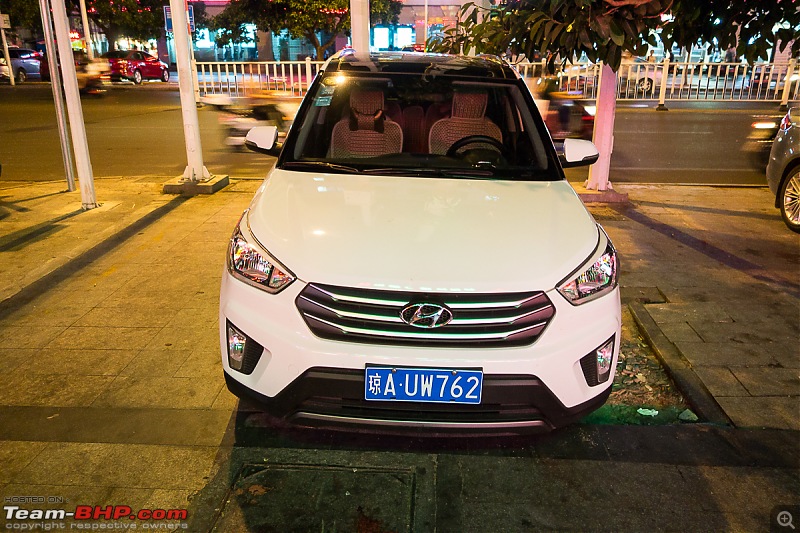
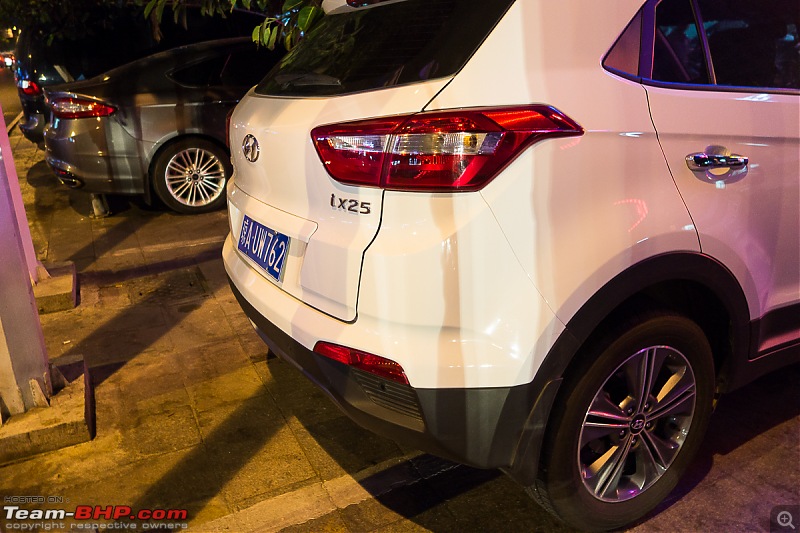
 but it seems that Hyundai has not yet allowed any reviewers to reveal about the drive till now.
but it seems that Hyundai has not yet allowed any reviewers to reveal about the drive till now.

